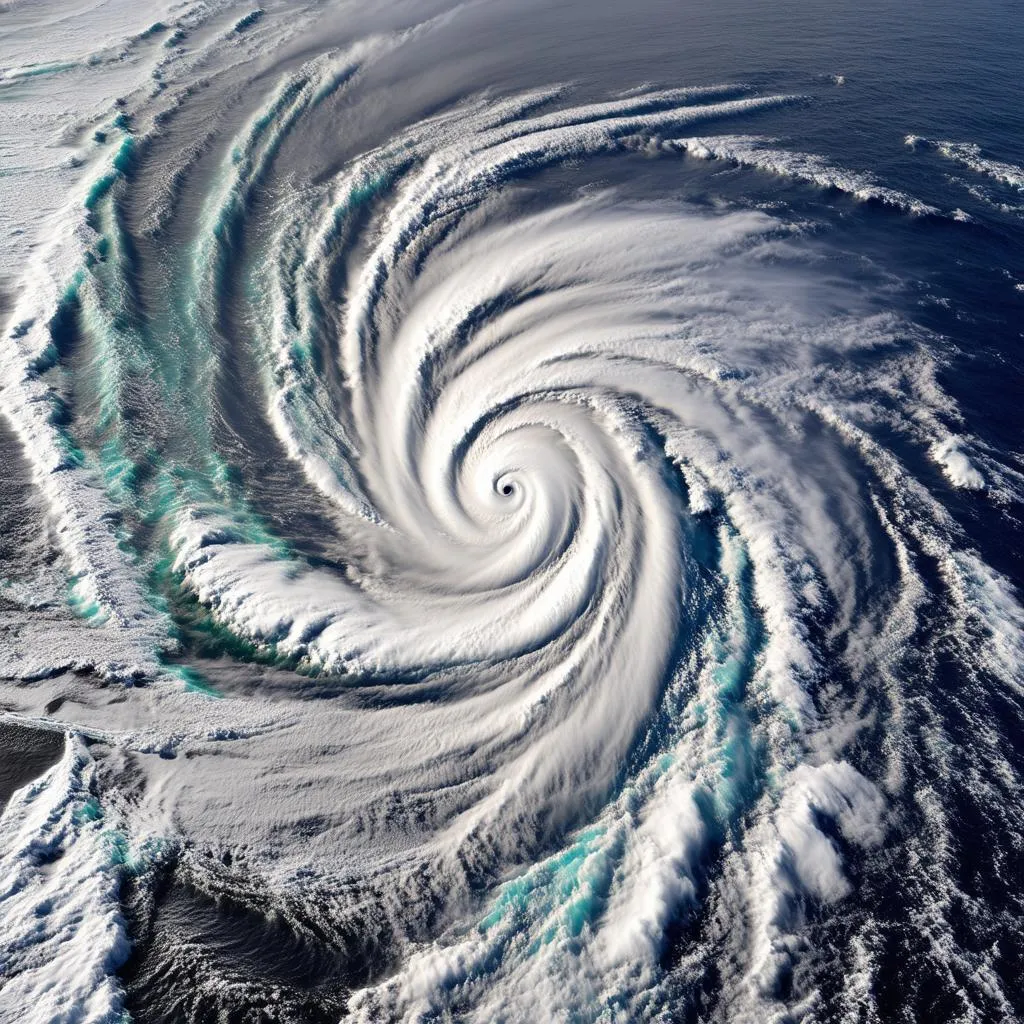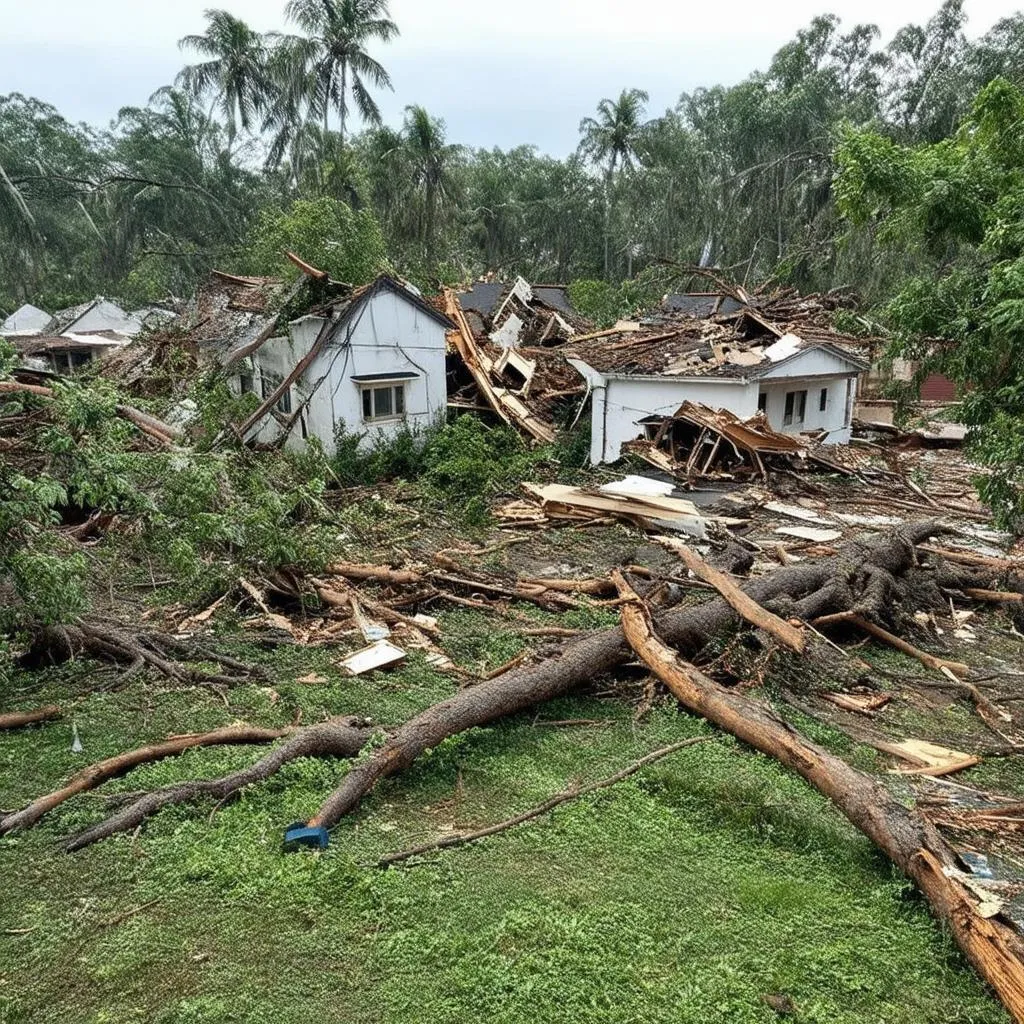Have you ever watched in awe as a hurricane churns across the ocean, wondering how far its fury can reach once it hits land? It’s a question that has captivated scientists and terrified coastal communities for centuries. While the open ocean provides a hurricane with the fuel it needs to grow, landfall marks the beginning of its decline. But that doesn’t mean the danger is over. These storms can still pack a devastating punch, carrying their destructive power far inland.
The Life Cycle of a Hurricane: From Ocean Giant to Inland Threat
Hurricanes are born over warm ocean waters, fueled by heat and moisture. As they spin and grow, they can travel thousands of miles, often reaching Category 5 strength with wind speeds exceeding 157 mph. However, once a hurricane makes landfall, it encounters a less hospitable environment.
 Hurricane Making Landfall
Hurricane Making Landfall
Cut off from its warm water energy source, the hurricane begins to weaken. Friction with the rougher terrain also plays a role, slowing its winds and causing it to lose steam.
So, How Far Can a Hurricane Really Travel on Land?
There’s no single answer to how far a hurricane can travel on land. On average, a hurricane will dissipate within 12 to 72 hours after making landfall. However, this is highly dependent on a variety of factors:
- Hurricane strength at landfall: A more powerful hurricane with a larger wind field can maintain its strength further inland.
- Speed of movement: A fast-moving hurricane may retain more of its power as it travels inland compared to a slow-moving storm.
- Geographic features: Mountains and hills can disrupt a hurricane’s circulation and speed up its demise, while flat terrain allows it to travel further inland.
- Available moisture: Even as a hurricane weakens, it carries a tremendous amount of moisture. If it encounters a moist environment inland, it can continue to produce heavy rainfall and even spawn tornadoes far from the coast.
Historical Examples: Hurricanes That Left Their Mark
History is filled with examples of hurricanes that defied expectations, traveling surprisingly far inland and causing widespread damage:
- Hurricane Camille (1969): This powerful Category 5 hurricane, one of the strongest to ever hit the United States, maintained hurricane-force winds for over 100 miles inland, devastating parts of Mississippi and Virginia.
- Hurricane Hugo (1989): After making landfall in South Carolina, Hugo tracked northwestward, maintaining hurricane-force winds for over 200 miles, causing significant damage as far inland as Charlotte, North Carolina.
Planning Your Travels During Hurricane Season: Safety First
If you’re planning a trip to a hurricane-prone area, it’s essential to stay informed and be prepared:
- Monitor weather forecasts: Pay close attention to weather reports and advisories from official sources like the National Hurricane Center.
- Know your evacuation route: Familiarize yourself with evacuation routes and procedures should you need to leave your hotel or rental property.
- Pack a hurricane preparedness kit: Include essential items like water, non-perishable food, flashlights, batteries, first aid supplies, and important documents.
FAQs About Hurricanes and Landfall
Q: Can a hurricane travel over mountains?
While mountains can weaken a hurricane, they don’t always stop them completely. The storm’s circulation can be disrupted, leading to heavy rainfall on one side of the mountain and drier conditions on the other.
Q: Can a hurricane spawn tornadoes inland?
Yes, even as a hurricane weakens over land, its rotating winds can interact with the environment to create tornadoes, often hundreds of miles inland.
 Hurricane Damage
Hurricane Damage
Q: How long does it take for a hurricane to dissipate after landfall?
Most hurricanes dissipate within a few days after making landfall, but some can linger for a week or more as low-pressure systems, bringing heavy rain and flooding.
Travelcar.edu.vn: Your Guide to Safe and Informed Travel
At travelcar.edu.vn, we’re committed to providing you with the information you need to travel safely and responsibly. From understanding the potential impact of hurricanes to planning your dream vacation, we’re here to help. Be sure to check out our other articles for more travel tips and insights.
Remember, preparation is key to staying safe during hurricane season. Be informed, have a plan, and enjoy your travels!